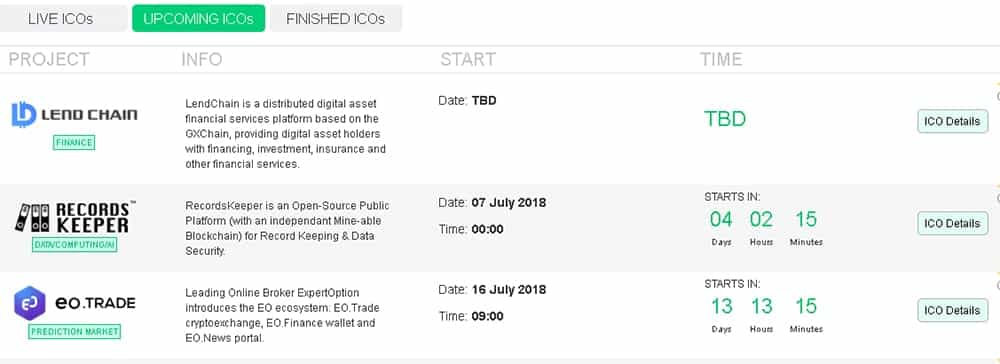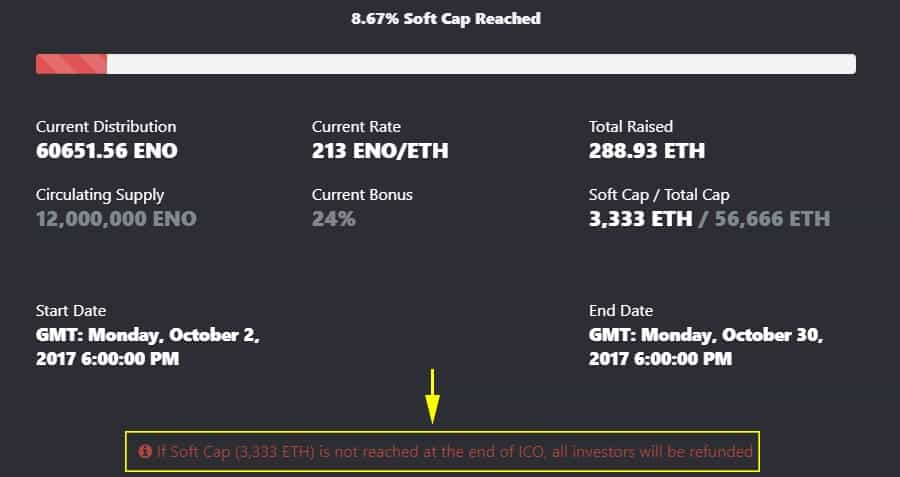ICO Bounty Programs: Complete Beginners Guide
Whenever bringing a new product to market there will be an advertising or marketing plan developed, and generally the most important metric is the penetration of the marketing.
In other words, how much awareness can be spread about the product or service.
This penetration gets as many people as possible familiar with the company or project, lets them know what’s offered and how the new product or service will benefit them. It also leads to additional word-of-mouth advertising, which is beneficial to the company since it is, in essence, free advertising for them.
Since the rise of the internet and social media, the social media marketing strategy has become a huge part of most company’s marketing plans. In fact, some rely solely on social media to promote their new business or product. Enter the ICO bounty program; a new spin on an old idea that is being used extensively by new blockchain startups.
As I go through the rest of this post you’ll learn how bounty programs have become an integral part of blockchain project marketing, how the bounty programs work, how you can get involved, if you should get involved, risks of bounty programs, and the possible future of the bounty program.
Ready to get started? Let’s go.
What are Bounty Programs?
Bounties have been derived from the digital gaming world, where free items or other perks have traditionally been offered to gamers for their help in game development, usually in the form of bug hunting.
In the broadest sense, bounties are simply a way to incentivize customers, or in the case of blockchain projects investors, to take some action. This works by the project offering a reward to users for completing certain simple tasks. It’s kinda like a barter, where the project rewards a person for doing a task, but it is also valuable advertising for the blockchain project that undertakes the bounty program.

Bounties have become increasingly useful as part of the ICO process of cryptocurrencies. In fact, many of the new start-up blockchain projects have incorporated some type of bounty reward into the ICO program. During the bounty period users can get rewards for spreading the word about the project, for finding bugs within the software, or even for actual development.
In most cases the reward is in the form of cryptocurrency, making bounty programs an attractive means to increasing ones cryptocurrency portfolio. Because most cryptocurrency enthusiasts are younger, they are quite used to the gaming bounties, and so cryptocurrency bounty programs have been a great way to spread the word about new technological projects.
Cryptocurrency bounties work because they provide massive value to the start-up projects and massive incentives for cryptocurrency enthusiasts.
How Bounties Tie-in With ICOs
Cryptocurrency bounty programs have evolved to the point where most projects will include a pre-ICO bounty and/or a post-ICO bounty. In most cases bounties are not done in conjunction with the ICO.
Pre-ICO Bounty Programs
As you probably guessed from the name, these bounty programs occur before the actual coin ICO takes place. Usually a pre-ICO bounty will be held to help generate buzz and hype around the project. They often focus on social media platforms, and are designed to create awareness about the project and the upcoming ICO.
In addition to social media, other non-traditional advertising channels may be used in order to increase market penetration. The goal of these bounties is to get people doing activities that will increase knowledge of the project, and hopefully increase word-of-mouth as well. Common pre-ICO bounty activities include the following:
1. Social Media Campaign Bounties
These are bounties that encourage users to take actions on their own social media accounts. The rewards are often tied to the engagement generated by such posts. Bounty rewards may be tied to tweets and retweets on Twitter, posts or shares on Facebook, YouTube videos, comments and shares, or other social media actions. Twitter is one of the more popular social media platforms targeted by bounty programs.
2. Article Writing Bounties
Article writing bounties can be a very good activity for those that have blogs or other online channels with many followers. An article writing bounty rewards creators for writing and posting a featured article on their blog. Just like the social media bounty the rewards are often tied to the visibility and engagement of the post, so higher bounties might be paid for articles that have a large number of views or social media shares.
3. Bitcointalk Signature Bounties
Many ICOs include this popular type of bounty, which is only open to members of the Bitcointalk forum. To qualify for the bounty the user needs to include a signature released by the ICO project, which includes some special tracking code. The bounty amount received will depend on the ranking of the user on the Bitcointalk forum. Typically users must be at least Jr. members on the forum to participate in this bounty.
Pro Tip: Many of these bounty programs are fine with a single person posting the signature on multiple accounts. This means you can have as many Bitcointalk accounts as you like, and get paid bounties from all of them.
Post-ICO Bounty Programs
Once the ICO is complete and funds have been raised there’s a different focus to the marketing efforts of the project. This calls for a different set of bounty programs, which are often based around improving the project through community based suggestions. Some common types of post-ICO bounty programs include:
1. Translation Campaign Bounties
These can be very good bounties to get involved in. They include translating the project documents, and often includes moderating discussions in foreign language forum groups. Speakers of many different languages can benefit geatly from this type of bounty, which often includes translating the project whitepaper and website, as well as the Bitcointalk forum ANN thread.
2. Bug Reporting Bounties
Those that are familiar with coding can help the project and get rewarded when bug reporting bounties are offered. These bounties can help the developers of a blockchain project as many smaller projects are quite strapped for developer resources. A good bug report will identify any issues with the software or platform in a clear and concise manner.
While the above identifies some common pre-ICO and post-ICO bounty activities, it’s important to understand that there are no rules when it comes to bounty programs. The above mentioned campaigns are known to be successful, which is why they are so widely used, but there are other types of bounties that can occur. In short, any bounty programs are totally at the discretion of the cryptocurrency project.
It isn’t unusual for a start-up project to earmark a certain percentage of the total coin supply for the bounty programs. Usually you can find the information about this amount in the project whitepaper, on their website, or in the Bitcointalk ANN thread.
How to Get Involved in ICO Bounties
For anyone interested in participating in new projects and expanding their cryptocurrency portfolios the ICO bounties are a great opportunity. By doing simple tasks you get to earn tokens and promote upcoming projects and ICOs.
Most of the bounty activities aren’t technical in nature and can be performed by anyone with an internet connection and some online accounts and connections. If you want to find out more about upcoming bounties two great resources are the ICO bounty threads at Bitcointalk and Cryptocurrencytalk.

Should Investors Participate in a Bounty?
There’s really no definitive answer to this question. The answer will depend on each individual and depends on one key factor – do your own research (DYOR). This principle applies to almost everything in blockchain projects. You’ll be able to readily find the whitepaper on the projects website, and can also read through opinions and analysis of others on Bitcointalk forums and on Reddit.
Read and research and come to your own conclusions about the merits or detractions of each individual project. There are also websites dedicated to reporting on upcoming ICOs that can be helpful to your research. Check out ICO Examiner and ICO Watchlist for starters.

You may want to consider the time requirements of the bounty program as one of your determining factors. Some bounty programs will require weekly tasks that can seem time-consuming and may be more than you want to take on. If you’re just getting started with bounties you might want to look for those that are easier and quicker to perform.
You don’t want to make your bounty programs turning into a part-time job. Also, strive to find the best projects to attach yourself to. If you limit yourself to only the best projects you’ll also be able to limit the amount of time you’re spending doing bounty programs.
Pro Tip: You’ll soon see that some projects offer huge numbers of tokens, while others have much smaller amounts to be given away, even for the same tasks. Often the number of tokens being given away is an indication of the quality of the project, and the dedication of the development team.
This is your first hint as you go to examine the history of the development team’s execution, the use case for the project, and the prototypes. Remember that 10 tokens from a valuable project are likely to be worth far more in the future than 1,000 shitcoins from a useless project.
Potential Bounty Risks
So far everything about bounties sounds great, right? Free tokens for doing simple tasks, what could go wrong?
Well, there are a few things. First among them is that you could start backing less than stellar projects, gaining coins that are worth absolutely nothing, and making yourself a joke on social media with your shilling of these shitcoins.
There’s a more insidious risk though, that many don’t consider.
When conducting an ICO there are both soft caps and hard caps put in place. In an increasing number of cases the ICO doesn’t meet its soft cap, and any funds collected go back to the investors. This is a failed ICO and no tokens are produced or distributed.

For the bounty hunter that means any time they spent promoting on social media, writing articles, or looking for bugs is wasted time. No coins issued means no bounty coins issued also. You haven’t lost any money, but you’ve lost something that many consider more precious, your time.
After you get hit with such a situation even once you’ll quickly change your approach to investing time into bounty programs. You’ll be more careful in investigating projects, avoiding those with no development plans or no product, but with a goal of raising $10 million for the creation of a decentralized, cloud based type of Airbnb-like reservation system where bounty participants can get 40% of the total coin supply.
The Future of ICO Bounty Programs
Bounty programs saw huge growth in 2017 as ICOs ballooned in popularity. Not surprisingly, many cryptoenthusiasts were more than happy to participate in something that offered the potential for free tokens. That alone shows great promise for the continuation of bounty programs.
There are clouds on the horizon though. Bounty programs have come under scrutiny from financial regulators, such as the Securities and Exchange Commission in the U.S. The reason the SEC has become interested in bounty programs is because they actively encourage people to participate in an asset that has financial risk associated with it.
The main thrust of the SEC scrutiny comes from something called the Howey Test, and how it might be applied to bounty programs. Because the blockchain projects realize profits from the efforts of third-parties (the bounty participants), the SEC is postulating that a bounty campaign constitutes an investment contract transaction. This makes all the bounty promoted tokens securities which are subject to securities regulations.
It isn’t only U.S. regulators coming to this conclusion. Financial regulators in the U.K. have also reached the same conclusion regarding bounty programs. This doesn’t mean bounty programs will necessarily disappear, but they could come under increasing scrutiny as the regulatory framework around crytocurrencies becomes more defined.
Conclusion
In general the bounty programs offered by cryptocurrency projects have been a good thing for cryptocurrency enthusiasts, especially those who are willing to do their own research rather than blindly joining any bounty program that comes along. With ICOs and related bounty programs increasing in popularity, participants need to be increasingly discerning in which programs they choose to join.
With regulatory pressures increasing bounty programs are likely to see increased scrutiny, which could do away with many of the useless programs that have appeared in the recent months. That won’t relieve potential participants from doing their own research, but hopefully it will make it easier to locate valid and valuable bounty programs.
Disclaimer: These are the writer’s opinions and should not be considered investment advice. Readers should do their own research.
